To mark Pride Month, Firstpost reached out to LGBTQ Indians to talk about a book/film/TV series/ character or any work of art — with explicit queer themes/tones, or those that were open to interpretation — that significantly impacted them. Here’s a compilation of their recommendations: Brick Pollitt in Cat On A Hot Tin Roof ‘No!—It was too rare to be normal, any true thing between two people is too rare to be normal.’ I have never seen the ambiguity of sexuality explored as sensitively as with Brick Pollitt, one of the lead characters in Tennessee Williams’ play Cat On A Hot Tin Roof. In the 1958 film adaptation, Paul Newman turned in one of his career’s best performances as the former star-footballer turned alcoholic escaping reality. Brick struggles with his relationship with his hyper-masculine father, Big Daddy (Burl Ives), refuses to have sex with his attractive wife Maggie (Elizabeth Taylor) and comes across as homophobic when talking about his relationship with his college buddy/footballer Skipper. And in spite of Brick espousing signs of a closeted gay man, Williams’ writing refuses to label him even once. [caption id=“attachment_9748811” align=“alignnone” width=“640”] 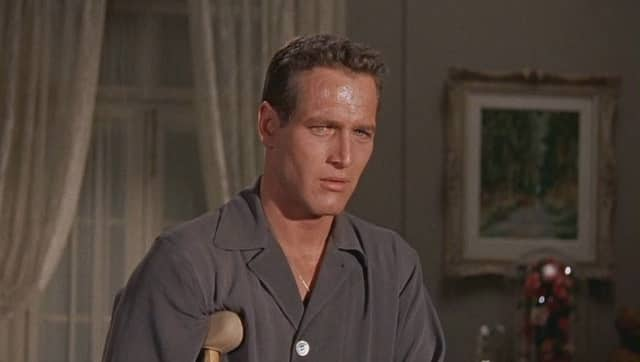 Paul Newman in Cat On A Hot Tin Roof[/caption] Over the course of the story, Maggie insists that Brick talk about Skipper and the love they shared. Big Daddy, dealing with his own mortality, also pushes his son to admit the truth about him and Skipper. But Brick doesn’t want to discuss this, and accuses his wife, father and society at large of making their friendship sound ‘dirty’. Was Brick gay? Was he bisexual? Or was he a heterosexual man capable of feelings for another man? These are questions left to the viewer to answer. Brick inspired me in many ways to write Professor Siras in Aligarh. — APURVA ASRANI, 43, FILMMAKER *** Straight Jacket: Overcoming Society’s Legacy of Gay Shame, by Mathew Todd I spent all my years surrounded by the loneliness, doubt, denial and shame that comes with being a gay person until I picked up this book. Surprisingly, all the stories in it are so universal and accurate considering it primarily documents the lives and state of gay men mostly in London. Reading this, I realised that all my insecurities, experiences, fears and facades are more common than I thought. It talks about bullying, the influence of pop culture, addiction, suicide, hyper sexualisation and gay culture in general in minute detail, with extreme care and empathy, backed by data. It made me feel that I am not alone and sometimes that is all you need. And sometimes it is also just enough of an inspiration to become the person who holds the door for the coming generation so that they may not have to suffer the way we had to. I have recommended this book to all my gay friends and I recommend it to anyone who is interested in the human condition. — ADESH PRASAD, 36, FILMMAKER [caption id=“attachment_9748861” align=“alignnone” width=“598”] 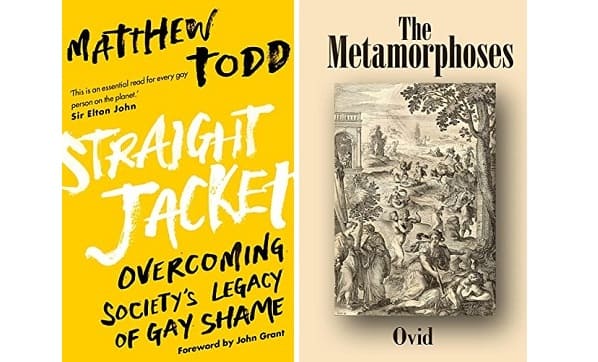 Covers for (L) Straight Jacket; (R) Ovid’s The Metamorphoses[/caption] *** ‘Rasiya Ko Naar Banao Ri’ When I first heard Kumarji sing this little Dadara, I was intrigued by its folksy ease. The natural beauty and obviousness of an emotional outburst that simply breaks into a song. Folk has that quality, music becomes ‘sahaj’ (easy); it evokes the natural expression of an emotion that formal language can barely follow. At second glance I was struck by the lyrics: रसिया को नार बनाओ री/ Rasiya ko naar banao ri. Many cultures in India actually celebrate menstruation. Especially the first time a girl menstruates there are some rituals or celebrations. I read rasiya as a lovingly given name to a maiden. The song to me looked like something that women folk in the Hindi belt would sing, as they so often do. Chaiti, Kajri, Hori, Jhula, and Dadara all are written, composed and sung in every household. It’s a gift we Hindustani musicians dearly cherish. ‘Rasiya’ certainly fits the bill.
I have come across this song time and again, I learnt that the song was about rasiya - a term often used for Krishna, when the gopikas would dress him up as a woman to play raas. Making him a naari (woman), so he understands how they feel. And I thought: what a beautiful way it was to embrace the feminine within us… Almost all of us millennial boys were at least once dressed up as a girl and had been photographed by our mothers. And it opened up a new window to look into cross dressing, drag, and queers in general. I realised how even a sneak peek into the song takes us through the empathetic window into the world of wonderful beauty of femininity. It certainly helped me to embrace the feminine in me. — LAXMIKANT BONGALE, 32, FILMMAKER/ HINDUSTANI MUSIC PRACTITIONER *** [caption id=“attachment_9748791” align=“alignnone” width=“640”] 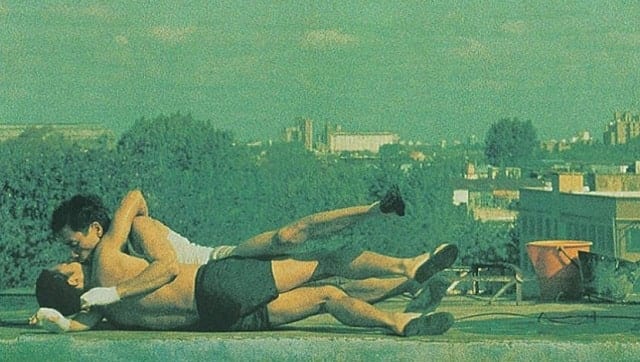 Detail from poster for Happy Together[/caption] **Happy Together, by ** Wong Kar Wai Unlike its name, Wong Kar Wai’s enchanting 1997 film Happy Together is anything but happy. It is about a gay couple from Hong Kong – Lai Yiu-Fai (Tony Leung) and Ho Po-wing (Leslie Cheung) – who go on a trip to Buenos Aires. The film does not paint a rosy picture of these two men in love. Instead we see their physical as well as internal journeys through a series of break-ups and reunions. ‘Let’s start over,’ says one to the other. The tender moments of intimacy eventually leading to physical abuse and emotional turmoil feel too real. This film is a wonderful case-study of loneliness, heartache and frayed relationships. At one point Fai stands in front of the gigantic Iguazu Falls in Argentina, alone, feeling terribly sad because he initially wanted to visit this place together with his partner. What follows is a long, meditative shot of the waterfall – something larger than life. It is cathartic and even though I had seen the film about eight years ago, somehow the stunning visuals have never left me. This scene always grounds me and reminds of Rabindranath Tagore’s philosophy of looking inwards in the times of a personal crisis and surrendering oneself. I personally know many queer couples who would fight over silly things like any regular couple. But unfortunately, seldom does one find a nuanced, normalised representation of those relationships in contemporary Indian cinema. Hence, to see these well-fleshed, flawed, relatable homosexual characters in this remarkable film was delightful. Hopefully we will get to see more such representation in near future, where the characters speak in our own language. — ABHRA DAS, 30, FILM PROGRAMMER, KASHISH MUMBAI INTERNATIONAL QUEER FILM FESTIVAL *** The Metamorphoses, by Ovid I first read this when I was an undergrad. Since then the book has remained relevant to me. Its themes of flux, transition, and instability remind me every day that our desires and sexuality are ever-changing, and can never be pinned down to certainty. The poetic brilliance of Ovid is a cherry over the icing. — RAHUL SEN, 29, PHD RESEARCHER *** Rose Tyler in Doctor Who A character I hold super close to my heart is Rose Tyler from the TV show Doctor Who. She epitomised vulnerability, fun, frolic, laughter and sunshine, and out of the many, many shows and books I’ve read, she always stands out for me. Not just for me but for her many queer fans around the world, the character holds a special place in our hearts. The show came out at a time when attitudes were beginning to change; there’s no obvious reason why she’s a queer icon but she just is. Sometimes there aren’t clear-cut/obvious reasons, just feelings. And Rose really is one. — ALEXANDER BALAKRISHNAN, 22, MODEL/STUDENT *** [caption id=“attachment_9748761” align=“alignnone” width=“640”] 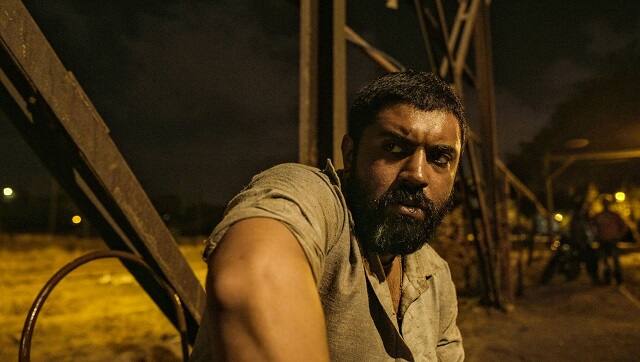 Nivin Pauly in Moothon[/caption] Moothon and Nagarkirtan I feel the things that affect me keep changing through years, but right now, the piece of art that affects me the most is the Malayalam film Moothon. As an artist, I’m always looking for pieces which speak directly to me and I felt that this film was long overdue. Not only does it sensitively portray queerness but also does so without the melodramatic, over the top representation of queer characters. Here the characters speak for not only their queerness but also their religion, caste, class. This incorporation of different elements and parts of a character to bring about a realistic and unabashed portrayal shook me in a positive way. Another such film which also inspired me is the Bengali film Nagarkirtan which again engages not only with queerness but also class questions. I feel as queer individuals, we are always been looked at from a singular frame of queerness but the fact is that an individual is made up of so much more and these films rightly paved the way for engaging with these different elements of a personality. — RAQEEB, 27, PHOTOGRAPHER-WRITER *** [caption id=“attachment_9747261” align=“alignnone” width=“640”]  Naya Rivera as Santana Lopez in Glee. Image via Twitter/@oocglee[/caption] Santana Lopez from Glee I am 24 now, so the first exposure to a lesbian character for me was Santana Lopez in Ryan Murphy’s acclaimed TV Series Glee. Santana’s struggle with internalised homophobia, bitterness towards everyone due to feeling pressured into compulsory heterosexuality, her heartfelt coming out scene to her grandmother who does not embrace her — all of it was extremely relatable to me. I grew up with a lot of internalised phobia and therefore spent my entire life until the age of 18 as a closeted queer person. Now, my situation is very different from then. I am out to my family, including my grandmother, and they love me and accept me just the same as the time they were unaware of my queerness. Ashwini Sukthankar’s Facing the Mirror: Lesbian Writing from India As an Indian lesbian woman, the most relatable literature for me has been Facing the Mirror: Lesbian Writing from India. In this book, Ashwini Sukthankar collected various stories from across India, revealing the richness and diversity of the lesbian experience for the first time. The stories in this book are all autobiographical pieces that date back to as far as the 1960s. The collection is not just queer because of the narratives but also because of its structure as it consists of fiction based on truth in form of poetry, essays and memoirs. The grammar has not been corrected and polished. It is raw, emotional, angry and very personal. In its 20th edition, the book begins with a foreward by renowned writer and activist Shals Mahajan that gives us a walk through the history of lesbian resistance and lesbian existence in this, our country. This book made me feel heard by some ancestors who have felt the same things. This book was not based on a western figure from the global north - it resonated because of its timelessness and relatability. — PRIYADARSHINI (she/they), SOCIAL WORKER, ACTIVIST, WRITER AND PHOTOGRAPHER *** [caption id="" align=“alignnone” width=“640”] 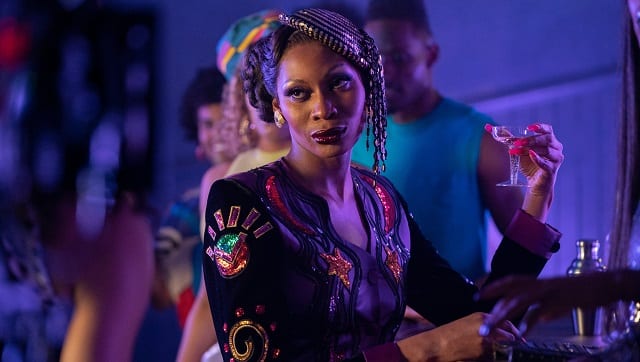 Elektra Abundance-Evangelista, the reigning ballroom champion in the Pose series. Image via Twitter/@most[/caption] Blanca Evangelista and Elektra Abundance from POSE To have a home and to be a home-maker, to build a house with people you love, to have your disagreements with them but still standing up for each other when time asks for it… Blanca inspires me to protect what I love dearly and fight for it until the end, staying beside it. I aspire to have Elektra’s attitude towards criticism. The way she deals with discrimination and shatters oppressors is something worth developing. Despite being the products of someone’s imagination, Blanca and Elektra have influenced me greatly to survive reality. Pose, the series, would have been incomplete without the powerful impact of both these characters. Every character speaks to you. You understand the characters because they talk about you and make you feel they are there to tell the world about you, about us, about the traumas that go unheard of, about the reality of the trans community. They have inspired so many like me, and I am glad they came into my life and the lives of many others. — SHAILESH ( Shai; he/they) IS THE AUTHOR OF THE POETRY COLLECTION THE WISDOM OF WILTING *** The Bold Type This TV series holds a special place in my heart because it shows the real life changes I want to see in the world. Aisha Dee as Kat Edison is the kind of person I aspire to be — strong, kind and brave. This show breaks several stereotypes in terms of representation of people of colour, gender identities, sexuality, and masculinity. I also love how Kat’s storyline is not limited to just her sexuality and the hardships of a queer person, but it’s also about the joys of it. She uses her platform to bring change as a queer Black woman, which is very rare and beautiful to witness on TV. The Queen of Coin and Whispers by Helen Corcoran If you want to read a book that has people of colour but is not race-blind, has queerness but the relationship of the protagonists is not the main conflict, and has a complex plot with many twists…this one is for you. I always wanted to read a book that did not associate queerness with unfortunate outcomes — The Queen of Coin and Whispers is just that. Set in an alternative universe with subplots about matriarchal societies, gender equality, and moments we wish to experience in the real world, the book is proof that queer stories need not always be sad — whether in fiction, or in real life. — AISH (she/her) *** [caption id=“attachment_9747001” align=“alignnone” width=“640”] 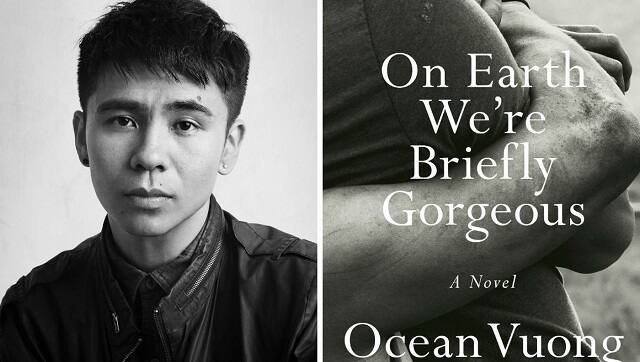 Ocean Vuong; cover for On Earth We’re Briefly Gorgeous[/caption] Little Dog from On Earth We’re Briefly Gorgeous, by Ocean Vuong My own life has been an amalgamation of acceptance of strangers and resistance of relatives, so to read this story of Little Dog — a second generation Vietnamese immigrant in America who despite all that he faced, rose like a lotus out of the muck — resonates with me and empowers me in a way only words and their beauty can. — SAHIL (he/they), POET AND ARTIST
***
Cave in the Snow, by Vicki Mackenzie Vicki Mackenzie’s book Cave in the Snow has left a deep imprint on my heart. It tells the story of Jetsunma Tenzin Palmo, an Englishwoman who was profoundly transformed by her encounter with Tibetan Buddhism in India. This led to her becoming a nun. Her critique of spiritual sexism in the Buddhist monastic establishment is a joy to read. It comes from a person who is anchored in practice, and is questioning in order to eliminate the suffering of fellow sentient beings. This book is a big deal to me; it feels like a wake-up call. I wonder how many precious years were lost seeking validation instead of liberation. Critiquing systems of oppression out there has been so much easier than watching how my mind creates suffering through misperception and clinging to beliefs. It is time to change. This book gives me the courage to envision a queer life that is not built around gender identity or sexual orientation but the fundamental recognition of our interconnectedness and our impermanence. I am tired of theory and ideology, and I need something more expansive to seek refuge in. Faith, yes, but also the Buddha, the Dharma and the Sangha. — CHINTAN GIRISH MODI, WRITER, EDUCATOR AND RESEARCHER *** [caption id=“attachment_9748701” align=“alignnone” width=“640”] 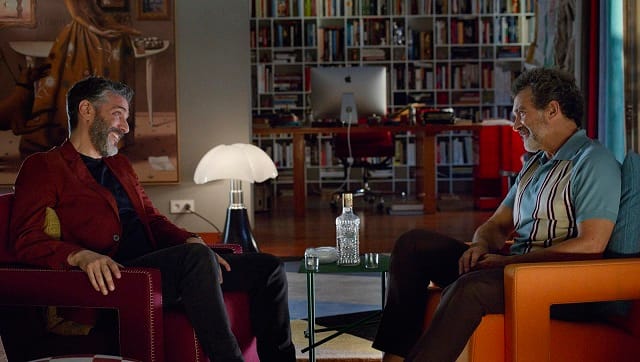 Still from Pain and Glory[/caption] Pedro Almodóvar’s Pain And Glory Pain And Glory took two ends of the queer experience — that first moment when you are confronted with the enormity of homosexual erotic desire (the young man faints), and the indifference of one’s lonely sunset years when old lovers wade in and out — and drapes it in Pedro Almodóvar’s striking candy-coloured frames. So much of being young is wanting to grow old and so much of growing old is yearning for the simplicity of youth; Almodóvar alternates disenchantment with nostalgia, aspiration with disappointment. It is the kind of film you watch once and remember forever, afraid to watch it again. — PRATHYUSH PARASURAMAN (he/him), FILM AND CULTURE CRITIC *** Call Me By Your Name, by Luca Guadagnino I loved the pristine innocence of the movie Call Me By Your Name. Unlike a lot of other queer themed movies, this one is not a story about coming out or the struggle against the proverbial ‘love that dare not speak its name’. Rather, I was taken up with how a very special kind of friendship makes both the characters acutely aware of their vulnerability. This in turn shapes a whole gamut of emotions such as affection, fear, intense longing, and sexual desire. I find some lines from the mesmerising Sufjan Stevens song in the film particularly apt in portraying the tender vulnerability and hesitation of young love. After presenting a series of tropes of care and comfort such as sleeping safely on the couch and covering up one’s face with the blanket brought by your lover, the song ends in a tone of lament: ‘And I would say I love/ But saying it out loud is hard/ So won’t say it at all/ And I won’t stay very long…But you are the life I needed all along/ I think of you as my brother/ Although that sounds dumb’. It is all too easy to read this song and the plot as the thwarting of desire by oppressive social norms. Might we resist that temptation? As we celebrate Pride Month and resist the onslaught against queer rights in many parts of the world, may we also be equally alive to vulnerability, care, and compassion as important registers that shape queer being in the world. SAGNIK DUTTA (they/them), 35, ASSISTANT PROFESSOR *** Breakwater, by Cris Lyra Last year I watched a short documentary film from Brazil, Breakwater, that has really stayed with me. It follows a group of friends to a remote beach around New Year’s Eve. Powerful, intimate, dignified, fun and musical… The camera brilliantly captures the larger issues of a patriarchal and racist society through simple acts of a haircut or their conversations around family, government, protests, etc. The friends have truly created a non judgmental space where they could be free. While in their real worlds they are still pushing to create a world that is more accepting and forgiving, here, they show that resistance can be beautiful. This film is an example of the change in culture that has been wrought at least in some spaces. In the 1960s, while the French New Wave was considered radical in its portrayals, in Francois Truffaunt’s Jules et Jim, the female lead, Catherine, plays dress up in men’s clothes, smoking cigars and racing the two friends Jules and Jim among other things. She is in love with both. I watched the film 15 years ago and while the vocabulary of being queer was not in vogue at the time, one immediately connected and related to this portrayal of pansexuality. Recent films such as _Portrait of a Lady on Fire_ by Celine Sciamma and French-Canadian Laurence Anyway, in that way, are bolder and ‘out there’ in their expression of sexuality and love. — DIVYA TRIVEDI (she/they), 37, JOURNALIST AND STUDENT OF CINEMA *** Nomi Marks, played by Jamie Clayton in Sense8 She was everything I wanted to become and more. Her journey as a transwoman was captured beautifully, but the best thing was that it was just a part of the story and not the story itself. The character treatment was not focused on her gender identity or sexuality but was woven naturally into the fictional story about strangers whose minds get connected to each other. It may have to do with the fact that the creators of the show Lily and Lana Wachowski are both transwomen. They are also the creators of the cult Matrix films. Hence there is a different sensibility with which the character of Nomi was written. They had said in an interview that Nomi was a reflection of themselves and how they saw the journey of a transwoman. Also the actor Jamie Clayton herself is a transwoman, so that further elevates the authenticity of the character. — TANVI NAIR (she/her), DATA ANALYTICS PROFESSIONAL *** [caption id=“attachment_9749431” align=“alignnone” width=“640”]  Daniel Levy as David Rose in a still from Schitt’s Creek[/caption] David Rose, played by Daniel Levy in Schitt’s Creek If I had to pick one, it would be David Rose from the show Schitt’s Creek. No two thoughts. Being pansexual myself, when David told Stevie, “I like the wine, and not the label,” — that was it for me. And the resonance I felt through that wonderful introduction of a pansexual character is inexplicable. There have been queer representations in a lot of movies and shows I’ve watched — some struggled to catch the nuances while others did really well. I think Schitt’s Creek became my comfort show because it was written by Daniel Levy who is a queer person himself and that is the representation that we all need. I had never seen a more clearer portrayal of a pansexual character in my life, and what the show did was to address so many underlying issues without making a single moment homophobic. In the scene where Patrick sings ‘Simply The Best’ for David in their store, you can see in David’s eyes the pain he has been through to find love and acceptance in all these years. It spoke of the toxicity we as queer people have to face and all our struggles, yet the show never made us feel a tinge of homophobia — it only gave me the strength to embrace myself and be proudly queer! — SUKANYA DEB (she/her), 23, JUNIOR ASSOCIATE PRODUCER *** Ardhanareeswara Stotram by Adi Shankaracharya Have you ever felt or noticed “you witnessing yourself ?” The picture almost looks like a reflection of you and at the same time, it is not exactly you. I came across this mythological text about a body, a dancing body with two distinct entities. The text describes the body of Nataraj — the dancing body — and analysed it beyond its physical form. It really moved and shook me from within. The piece written by Adi Shankaracharya transported me to a land of thrilling imagination. I started looking at a human body with an absolutely different perspective. As a dancer, I take a lot of interest in the human or the physical body. I am extremely observant about the relationship between the soul (the ‘purusha’) and the body (the ‘prakriti’), in my personal understanding. The most balanced and effective amalgamation of two energies within a physical body can do wonders. Consider a ‘yugmaj’ (zygote) within which the male and female gametes intertwine and coexist, and they together produce life. To live a healthy life and to create a healthy society one needs to identify, believe and celebrate life in its own beauty, oscillating between the two energies, and yet existing within one whole entity — Such a thought was the seed of my dance production, Sampoornataa that was a result of my research and collaboration between two popular Indian classical dance forms: Kathak and Odissi. Often known for their distinct styles, these dance forms fused together like they were never different from each other. I had Kavya Ramesh, the beautiful Odissi dancer and a student of Guru Nivedita Mukherjee, onboard and with her artistic knowledge she supported and gave a form to the formless imagination boiling in my grey space. The choreography came out to be a narrative of a love story between two entities residing within one body.
— AYAN BANERJEE (he/him), 32, KATHAK PRACTITIONER/DESIGNER *** Barry Jenkins’ Moonlight Moonlight is probably best known for pulling off a major upset by winning the 2017 Academy Award for Best Picture over La La Land. But for many of us who have watched it – the film is a remarkable portrayal of the sexuality of queer black men and their experiences of bullying, violence and isolation. Set in Miami, Moonlight traces the life of its protagonist Chiron from childhood, adolescence to adulthood. The movie does not shy away from addressing racism nor does it provide easy answers. The perpetrators of violence are often Black, but the characters do not see proximity to whiteness as the solution. A key role model for Chiron is his surrogate father Juan (Mahershala Ali), a drug dealer who defies stereotypes of hyper-masculinity. One key exchange between the two is as follows: Young Chiron: What’s a fa*got? Juan: A fa*got is… a word used to make gay people feel bad. Young Chiron: Am I a fa*got? Juan: No. You’re not a fa*got. You can be gay, but you don’t have to let nobody call you a fa*got. [caption id=“attachment_9750941” align=“alignnone” width=“640”] 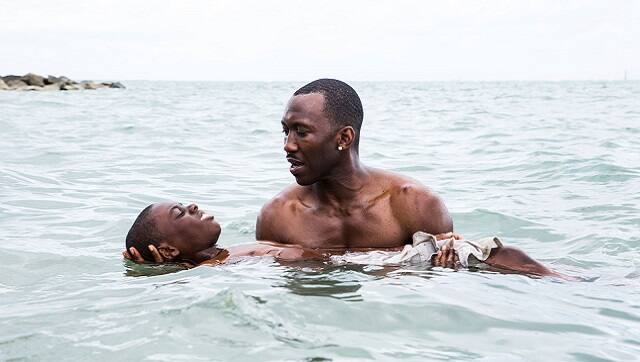 Moonlight (2016)[/caption] There is also an absolutely heartbreaking scene in the schoolyard where the protagonist Chiron is repeatedly punched by his friend Kevin who he has been intimate with. Kevin and Chiron reconnect years later and this left me with hope but was also a reminder that resolutions are not always simple. Kevin asks if Chiron remembers the last time they saw each other and Chiron responds by saying he tried not to remember for a long time. — SURAJ GIRIJASHANKER, 33, ASSISTANT PROFESSOR *** In Memoriam****, by Alfred Tennyson I first came across Alfred Tennyson’s In Memoriam as a child, in a small, ragged volume of brittle, moist brown paper, littered with pencil entries in my grandfather’s hand. It was a book of poetry (a single poem, spanning 133 sections) written in memory of a lost friend – Arthur Hallam – who died in 1833, when both he and Alfred were in their early 20s. Composed in the richest lyric, and over the course of 17 years, the book is a celebration of the love between two men, and a long elegy for a kiss cut short by death. It is still the book that I go back to when it gets colder than usual, and when I am missing the old love that I know I cannot have. — SUCHISMITO KHATUA (he/him/his), 25, PhD SCHOLAR *** Persona, by Ingmar Bergman What does it take for a work of art to stand the test of time? Possibly, layers. Persona is one such film that has been touted as arguably the one with the most different interpretations. Directed by the great Ingmar Bergman, Persona tells a story of an actress who suddenly stopped talking and, her caregiver nurse who loses her personality to her patient’s. The physical gesture used in the film often prompted critics to consider lesbianism as its one of the predominant themes. For me, it’s the perfect example of ‘the mind sees what it wants to see’ and it’s important to accept everyone’s perception, be it sexual orientation, gender identity or simply, the way of life. — SANDIPAN PAUL, 27, POSTDOCTORAL RESEARCHER *** Rupaul’s Drag Race The series presents my community. I like it because it destroys the stereotypes of society and shows diversity. When I was a teenager, I used to watch this series, and I thought, ‘I’m not the only gay.’ — IHTISHAM (he/him) is based in Pakistan.


)
)
)
)
)
)
)
)
)



